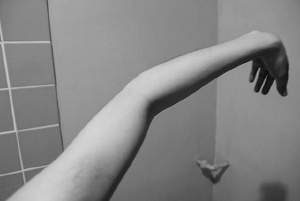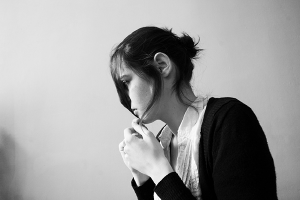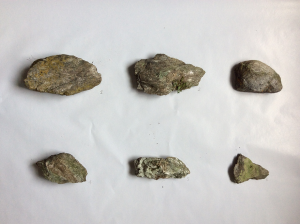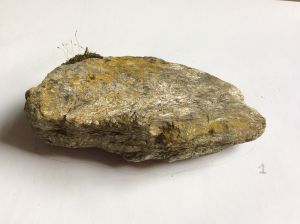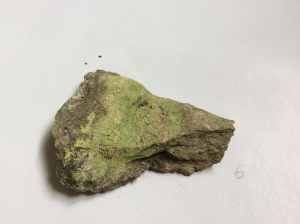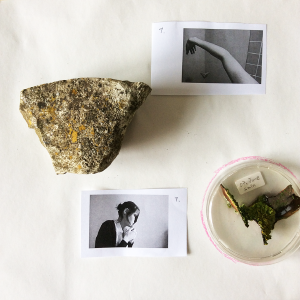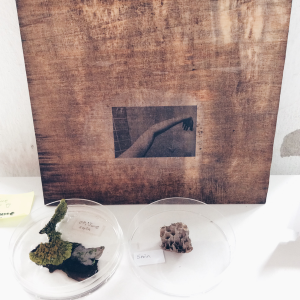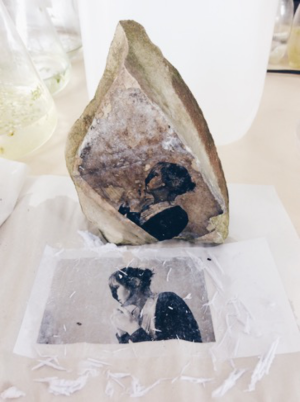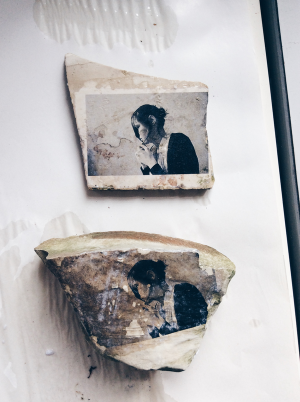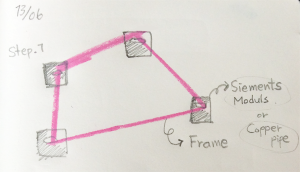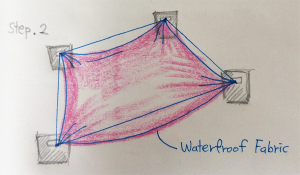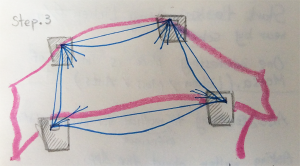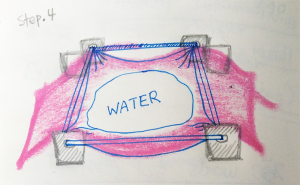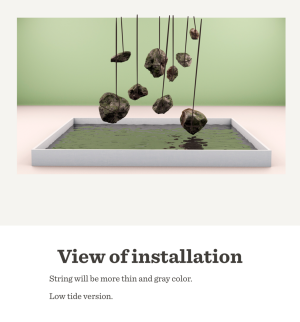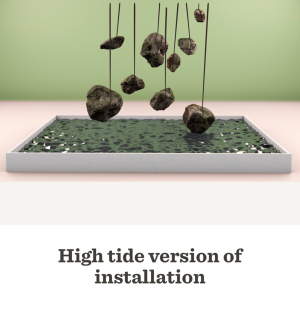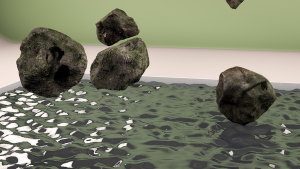BIOELECTRONICS, AESTHETICS & OTHER INTERESTING THINGS
Hello
My name is Smin Kim. I'm studying Media art and design (MFA) at Bauhaus University Weimar.
Currently living and working in Weimar. Nice to see you here!
Inspiration
Liquid Emulsion on stone
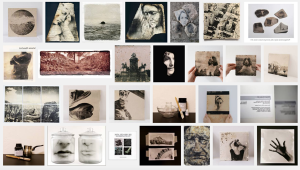
>>google search to Liquid Emulsion
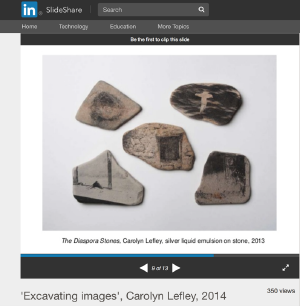
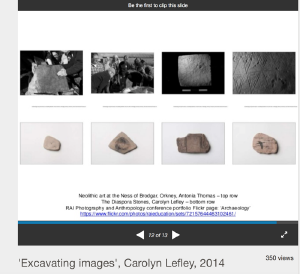
'Excavating images', Carolyn Lefley, 2014
Slides to illustrate a paper presented at the RAI Anthropology and Photography conference, British Museum. May 2014
http://www.slideshare.net/lefley/excavating-images-carolyn-lefley-2014
Lichen
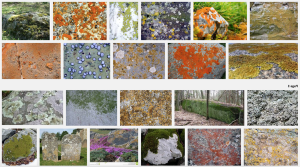
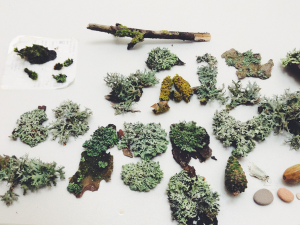
A lichen is a composite organism that arises from algae or cyanobacteria (or both) living among filaments of a fungus in a symbiotic relationship. The combined life form has properties that are very different from the properties of its component organisms. Lichens come in many colors, sizes, and forms. The properties are sometimes plant-like, but lichens are not plants. Lichens may have tiny, leafless branches (fruticose), flat leaf-like structures (foliose), flakes that lie on the surface like peeling paint (crustose),or other growth forms.
Lichens occur from sea level to high alpine elevations, in a very wide range of environmental conditions, and can grow on almost any surface.
Different kinds of lichens have adapted to survive in some of the most extreme environments on Earth: arctic tundra, hot dry deserts, rocky coasts, and toxic slag heaps. They can even live inside solid rock, growing between the grains. Some lichens do not grow on anything, living out their lives blowing about the environment. It is estimated that 6% of Earth's land surface is covered by lichen.
Symbiotic relation
A lichen is a composite organism that emerges from algae or cyanobacteria living among the filaments (hyphae) of a fungus in a mutually beneficial (symbiotic) relationship. The fungus benefits from the algae or cyanobacteria because they produce food by photosynthesis. The algae or cyanobacteria benefit by being protected from the environment by the filaments of the fungus, which also gather moisture and nutrients from the environment, and (usually) provide an anchor to it.
Evidence that lichens are examples of successful symbiosis is the fact that lichens can be found in almost every habitat and geographic area on the planet. Two species in two genera of green algae are found in over 35% of all lichens, but can only rarely be found living on their own outside of a lichen.
Growth rate
Lichens often have a regular but very slow growth rate of less than a millimeter per year. Different lichen species have been measured to grow as slowly as 0.5 mm, and as fast as 0.5 meter per year.
In crustose lichens, the area along the margin is where the most active growth is taking place. Most crustose lichens grow only 1–2 mm in diameter per year.
Source form Wikipedia, the free encyclopedia
https://en.wikipedia.org/wiki/Lichen
Growing
Collections
Species
Crustose lichen - Caloplaca and Caloplaca marina
Lobate lichen - Lecanora dispersa
Endophloelic - Amandinea punctata
Chrysotrix candelaris or chlorina (green yellow)
Conditions
Keeping lichen in the shade, 24h air circulation, water supplying one time in a day
(Rice water supplying 2 times in a week)
*Lichen on the stone
An idea about how it looks a stone with lichen.
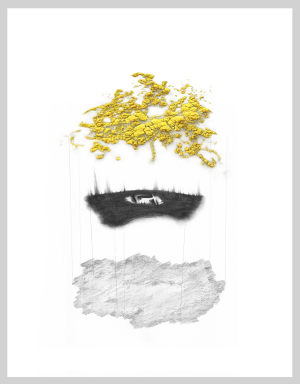
Methods
=
Method1 : Liquid emulsion
With a liquid silver emulsion applications can be made to a variety of surfaces such as tile, glass, pottery, wood, canvas, stainless steel and coated metals. Brushing, dipping, and spraying are among the techniques employed for applying the emulsion to three-dimensional surfaces.
>> References
Method2 : Transfer gel medium
We have a ton of slab stone in our yard, and as soon as I came across a few pieces that were particularly thin I knew exactly what I wanted to do with them. I also have a few pictures I have been meaning to display, so this project was a good way to finally get around to displaying them. After a lot of research I found that there are many ways get pictures onto stone, each with varying effects. I tried out three methods and eventually went with one though I will talk about the the other two as well.
HOW TO TRANSFER IMAGES WITH INKJET OR LASER PRINTS
How to make it?
Here is a breakdown of how I transferred the images. 1. Clean the rock 2. Gesso is not necessary for the transfer here, it just adds tooth and depth. You can use watered down white paint. Let it dry. 3. Use a "Splendid Blender" pen by Chartpak. Other blender pens don't have the same chemical composition, and won't work. Check out "Splendid Transfer" on my sidebar for more info on the pen. 4. Make a laser, toner based copy of the image you want to use. Ink jet copies don't work. 5. Place the copy face down on the rock. 6. Rub the pen over the image, while keeping the paper stable. If it slides around, you'll get a blurry image. Press hard till the image transfers. 7. Make sure you have lots of ventilation when using the pen.
>> References
- Playing With Rocks by villabarnes.com
- Photographs on Stone by jonesaw
- Pallet Crates & Inkjet Image Transfer to Wood by blissful2015
Method3 : Bae-joep, koreanish technic
We have a ton of slab stone in our yard, and as soon as I came across a few pieces that were particularly thin I knew exactly what I wanted to do with them. I also have a few pictures I have been meaning to display, so this project was a good way to finally get around to displaying them. After a lot of research I found that there are many ways get pictures onto stone, each with varying effects. I tried out three methods and eventually went with one though I will talk about the the other two as well.
Experiments
Transfer image experiments
1. Wood
2. Surface on wood
3. Flat stone
4. Making smooth flat stone
5. Curve stone
>> test images from last work
